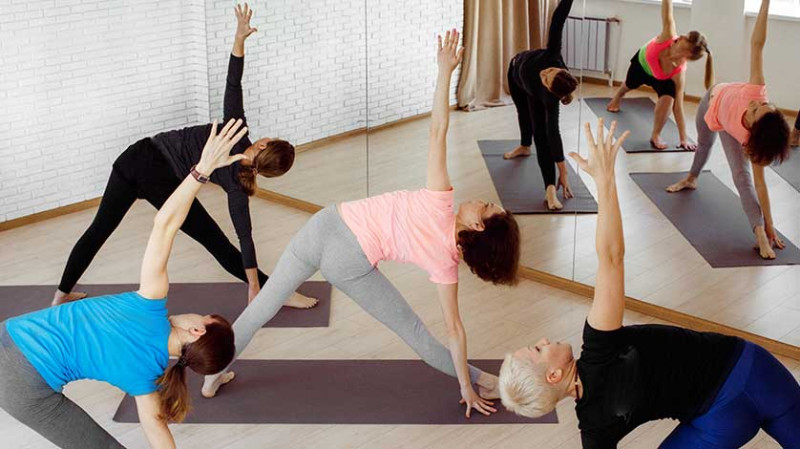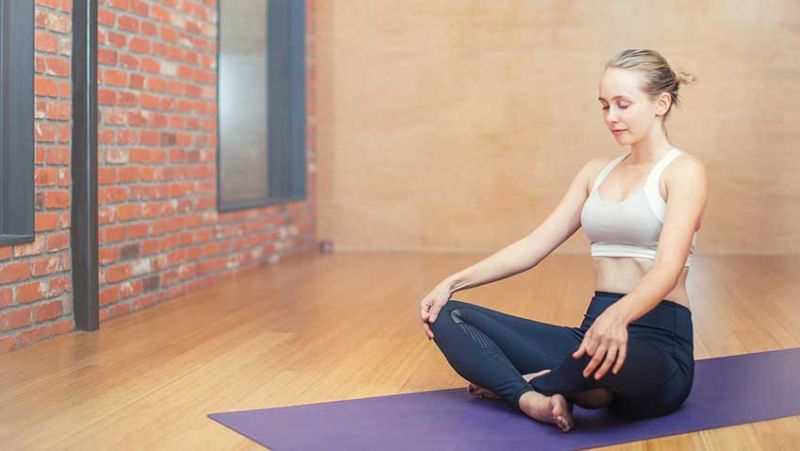
Becoming a good yoga teacher is more than mastering postures and sequences — it's about embodying the essence of yoga and inspiring your students to connect with their inner nature. Drawing on the profound wisdom of Sadhguru and the teachings from Isha Hatha Yoga, this article will guide you through the essential qualities, skills, and mindset shifts necessary to become a truly transformative yoga teacher.
Understand Yoga Beyond Physical Exercise
In the modern world, yoga is often reduced to just a fitness regime. However, according to Sadhguru, yoga is a science and a technology for inner well-being. As a yoga teacher, it's crucial to internalise that yoga is an ancient spiritual process aimed at creating union within oneself — not just about flexibility or strength.
When teaching, emphasise the spiritual and energetic dimensions of yoga, not merely the aesthetic or physical aspects. Students should walk away from your sessions not just feeling physically well, but also mentally and emotionally balanced.
Integrating the philosophy behind yoga into your classes encourages deeper engagement, helping your students to respect the practice and experience the full spectrum of its benefits.
Reading texts like the Yoga Sutras of Patanjali or Sadhguru’s book "Inner Engineering" can exponentially expand your understanding and enable you to present yoga in its true depth and dimension.
Embodiment: Live Your Yoga
One of the most powerful teachings of Sadhguru for aspiring yoga instructors is the importance of living yoga, not just doing yoga. Your personal commitment to your daily sadhana (spiritual practice) will directly reflect in the quality of your teaching.
Students are highly perceptive — they can sense authenticity. If you are merely instructing from memory or copying sequences without experiencing them yourself, it will diminish your impact.
Following the rigorous and profound practices taught through Isha Hatha Yoga can empower you to live in such a way that every aspect of your being resonates with the essence of yoga, naturally inspiring your students.
Moreover, living yoga makes your presence magnetic. Your students will not just learn from your words, but from who you are — your calmness, your energy, your stability.
Deliver Classical Hatha Yoga with Integrity
Isha Hatha Yoga stresses the importance of transmitting classical hatha yoga in its purest form, without distortion. Unlike many modern approaches that adapt yoga to suit fitness trends, Sadhguru emphasises offering it exactly as it was handed down through the ages for maximum benefit.
This may require more intensive training and ongoing refinement of your own understanding and practices, but it ensures that what you offer is truly transformative rather than superficial.
Maintaining this integrity can distinguish you from thousands of other teachers who offer superficial yoga classes. Students who find authentic sources of yoga are likely to remain loyal and recommend your teachings to their network.
If you're interested in deepening your own practice, consider participating in advanced teacher training programs such as the 21-week Isha Hatha Yoga Teacher Training Programme.
Create a Sacred Space for Learning
The environment you create in your classes is crucial. According to Sadhguru, sacredness is an essential component to yoga — it is not about seriousness, but about deep involvement in what you are doing.
Before starting a session, ensure your space is clean, uncluttered, and energetically inviting. Use incense, light a diya (oil lamp), or even play subtle, traditional music to enhance the atmosphere.
Beginning and ending your classes with a chant like AUM or a simple moment of silent gratitude connects students with a sense of reverence, making their practice more profound.
Remember, you are not just teaching movements. You are facilitating a journey inward. Everything about your teaching environment should support that intention.
Be Consistently a Student First
Sadhguru often reminds us that the best teachers are eternal students themselves. No matter how experienced you become, the attitude of humility and willingness to learn must never leave you.
Attend workshops, stay connected to your mentors, revisit your foundational practices, and seek to improve your understanding every day. Personal growth directly nourishes your ability to teach others effectively.
Additionally, being curious and open-minded helps you relate better to your students' challenges and questions, making you a more compassionate and adaptable teacher.
Growth as a teacher is a dynamic, ongoing process. Those who rest on their laurels quickly lose relevance, while those dedicated to evolving continually inspire others naturally.
Understand the Science of the Body and Mind
Teaching yoga competently demands an understanding of anatomy, physiology, psychology, and energy systems. Without this knowledge, you risk misguiding your students or, worse, causing injury.
Study how different asanas impact various body systems. Learn about prana (life energy) and how it flows. Familiarise yourself with basic biomechanics to guide students into postures safely and effectively.
At Isha Hatha Yoga, the training places heavy focus on understanding both the physical and subtle dimensions of the human body, ensuring that you can design classes that are not only safe but also deeply energising.
Having a solid foundation in these sciences lends tremendous credibility to your teaching and increases your students' trust and respect in your methods.
Focus on Small Details with Precision
Great yoga teachers pay great attention to the small things. Sadhguru often emphasises that precision in physical practice leads to deeper internal alignment.
Whether it’s the exact angle of a foot in Trikonasana or the subtle engagement of muscles in Bhujangasana, conveying these refinements will exponentially enhance the efficacy of your students’ practice.
Encourage your students to be patient, attentive, and dedicated to mastering the basics before moving on to complex postures.
Precision not only prevents injuries but also enhances focus and discipline — qualities that ripple out into every area of a person’s life.
Develop Deep Listening and Compassion
Every student comes to yoga with a unique body, mind, and life story. Sadhguru frequently speaks about the need for sensitivity and intuition as a teacher.
Learn to listen — truly listen — not only to what students say but also to what their bodies, energy, and emotions communicate.
Adjust your approach depending on the individual. Some may need more motivation; others may need patience and gentleness. Connecting on this level builds trust and makes you a truly beloved teacher.
Practice observing your students with an open heart and without judgment, responding to their needs rather than rigidly clinging to your lesson plan.
Commit to Uplifting and Transformational Teaching
Your ultimate vocation as a yoga teacher is not just to deliver classes but to offer tools for transformation. Each session you lead is an opportunity to uplift people’s lives on every level.
Approach your class not as a job, but as a sacred offering. Come prepared, yet remain flexible; be clear, yet deeply connected and inspired.
| Key Qualities of a Good Yoga Teacher | How to Cultivate Them |
|---|---|
| Authenticity | Commit to daily personal practice (sadhana) |
| Knowledge | Continuously study classical texts and anatomy |
| Sensitivity | Deeply listen to students' needs and energies |
| Precision | Focus on correct alignment and minute details |
| Sacredness | Create a pure, uplifting environment for practice |
Conclusion: Teaching Yoga is a Sacred Responsibility
Becoming a good yoga teacher as per Sadhguru’s vision requires more than acquiring a certificate — it demands profound inner commitment, authenticity, precision, and devotion to your students' well-being.
By embodying the timeless teachings of Isha Hatha Yoga, you not only transform your own life but also act as a catalyst for transformation in others. In a world hungry for genuine inner balance, the need for authentic yoga teachers has never been greater.
Stay committed to your path with sincerity, humility, and passion, and you will become a beacon of light for many seekers on their journey to well-being and liberation.





